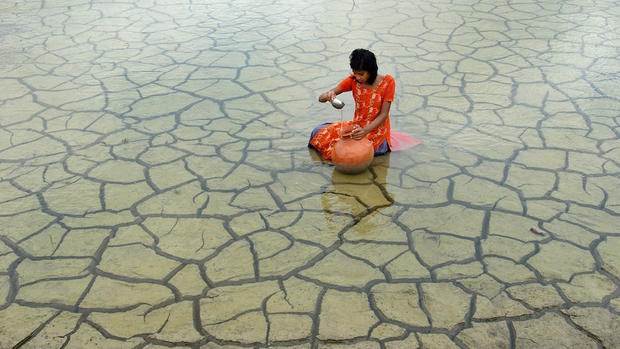At least one year between now and 2026 has a 48% chance of exceeding 1.5 degrees Celsius of warming above pre-industrial levels — a temperature increase seen as a threshold for more extreme impacts of climate change — according to a study produced with the World Meteorological Organization. Scientists warn that the five-year forecast reveals a future where temperatures exceeding the 1.5 degrees Celsius mark could occur for longer time periods.
According to the Global Annual to Decadal Climate Update, led by the United Kingdom’s Met Office, the annual average of global near-surface temperatures for any year over the next five years is forecast to be between 1.1 and 1.7 degrees Celsius higher than preindustrial levels, or the average temperatures between the years 1850 and 1900.
The study notes that “there is only a small chance” of the five-year average exceeding the 1.5 degrees Celsius threshold.
In the 2015 Paris Agreement, 189 countries set a goal of limiting the long-term global average temperature increase to under 1.5 degrees Celsius. The climate treaty includes agreements from the parties to lower greenhouse gas emissions and track them. A recent report by the U.N. warned that the world is “way off track” from meeting the emissions goals, and the new study indicates time is running out.
“This study shows — with a high level of scientific skill — that we are getting measurably closer to temporarily reaching the lower target of the Paris Agreement on Climate Change,” the World Meteorological Organization’s secretary-general, Professor Petteri Taalas, said in a statement. “The 1.5°C figure is not some random statistic. It is rather an indicator of the point at which climate impacts will become increasingly harmful for people and indeed the entire planet.”
Dr. Leon Hermanson of the Met Office said one year of global temperatures rising above that mark would not breach the Paris Agreement’s threshold. “But it does reveal that we are edging ever closer to a situation where 1.5°C could be exceeded for an extended period,” he said in a statement.
Scientists also found “a very strong likelihood” of one of the next five years being the globe’s warmest on record, surpassing the current record which occurred in 2016. And data revealed more than a 90% chance of 2022 to 2026’s average temperatures being higher than those recorded during the last five-year period.
Regionally, data suggests an increased chance of drier conditions across southwestern Europe and southwestern North America, while wetter conditions are forecast in northern Europe, the Sahel region of Africa, and Australia during 2022.
“For as long as we continue to emit greenhouse gases, temperatures will continue to rise,” Taalas said. “And alongside that, our oceans will continue to become warmer and more acidic, sea ice and glaciers will continue to melt, sea level will continue to rise and our weather will become more extreme. Arctic warming is disproportionately high and what happens in the Arctic affects all of us.”



